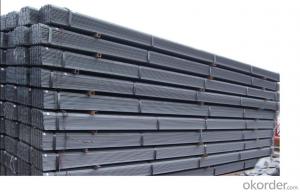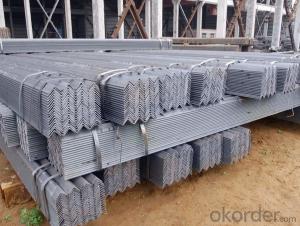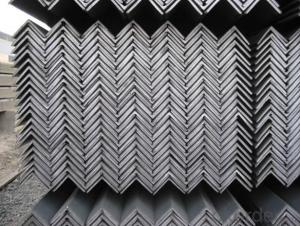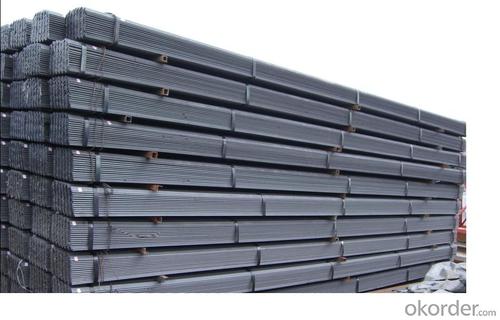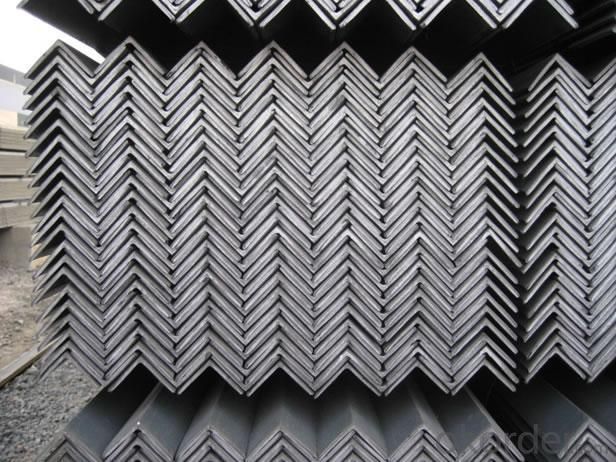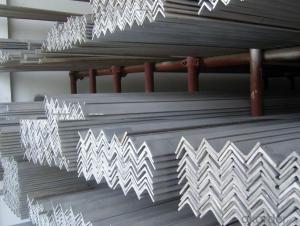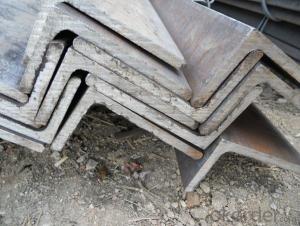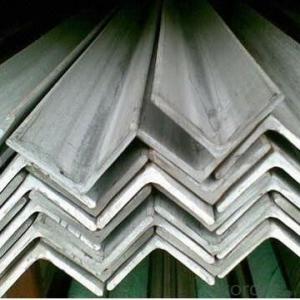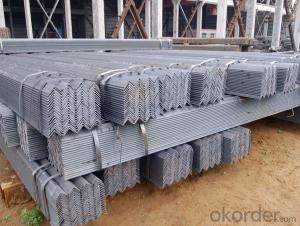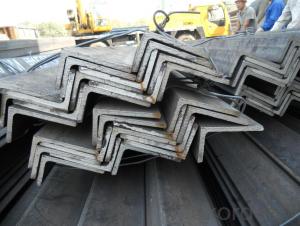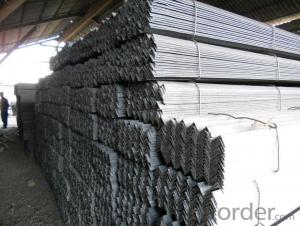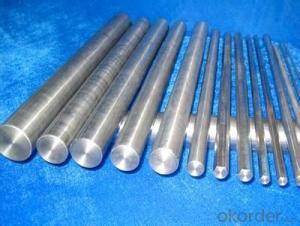Steel Unequal Angle GB Q235 Q345 20-250MM
- Loading Port:
- Tianjin
- Payment Terms:
- TT OR LC
- Min Order Qty:
- 25 m.t.
- Supply Capability:
- 20000000 m.t./month
OKorder Service Pledge
OKorder Financial Service
You Might Also Like
Specification
Product Description:
OKorder is offering Steel Unequal Angle GB Q235 Q345 20-250MM.Our supplier is a world-class manufacturer of steel, with our products utilized the world over. OKorder annually supplies products to European, North American and Asian markets. We provide quotations within 24 hours of receiving an inquiry and guarantee competitive prices.
Product Applications:
According to the needs of different structures, Angle can compose to different force support component, and also can be the connections between components. It is widely used in various building structures and engineering structures such as roof beams, bridges, transmission towers, hoisting machinery and transport machinery, ships, industrial furnaces, reaction tower, container frame and warehouse etc
Product Advantages:
OKorder's Steel Unequal Angle GB Q235 Q345 20-250MM are durable, strong, and resist corrosion.
Main Product Features:
· Premium quality
· Can be recycled and reused
· Mill test certification
· Professional Service
· Competitive pricing
Product Specifications:
Manufacture: Hot rolled
Grade: Q195 – 235
Certificates: ISO, SGS, BV, CIQ
Length: 6m – 12m, as per customer request
Packaging: Export packing, nude packing, bundled
Sizes: 25mm-250mm | ||||||||||||
a*t | ||||||||||||
25*2.5-4.0 | 70*6.0-9.0 | 130*9.0-15 | ||||||||||
30*2.5-6.6 | 75*6.0-9.0 | 140*10-14 | ||||||||||
36*3.0-5.0 | 80*5.0-10 | 150*10-20 | ||||||||||
38*2.3-6.0 | 90*7.0-10 | 160*10-16 | ||||||||||
40*3.0-5.0 | 100*6.0-12 | 175*12-15 | ||||||||||
45*4.0-6.0 | 110*8.0-10 | 180*12-18 | ||||||||||
50*4.0-6.0 | 120*6.0-15 | 200*14-25 | ||||||||||
60*4.0-8.0 | 125*8.0-14 | 250*25 | ||||||||||
FAQ:
Q1: Why buy Materials & Equipment from OKorder.com?
A1: All products offered byOKorder.com are carefully selected from China's most reliable manufacturing enterprises. Through its ISO certifications, OKorder.com adheres to the highest standards and a commitment to supply chain safety and customer satisfaction.
Q2: How do we guarantee the quality of our products?
A2: We have established an advanced quality management system which conducts strict quality tests at every step, from raw materials to the final product. At the same time, we provide extensive follow-up service assurances as required.
Q3: How soon can we receive the product after purchase?
A3: Within three days of placing an order, we will begin production. The specific shipping date is dependent upon international and government factors, but is typically 7 to 10 workdays.
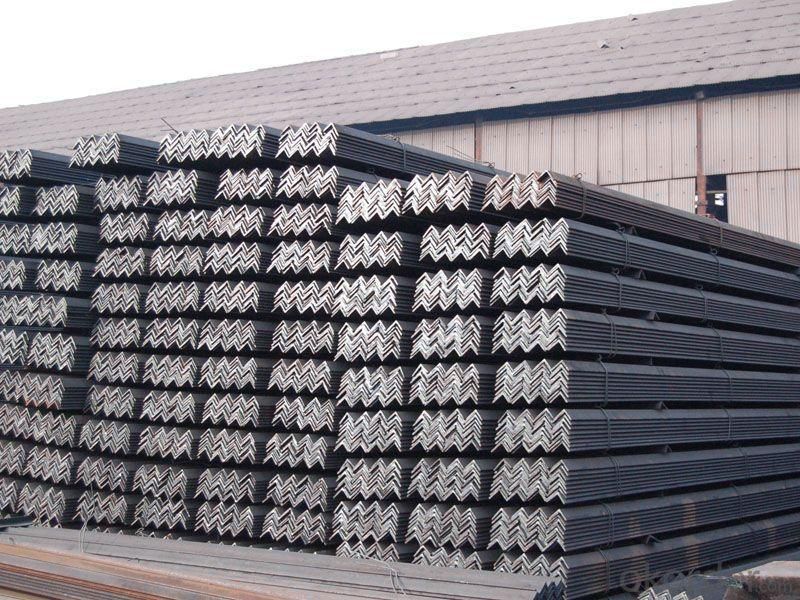
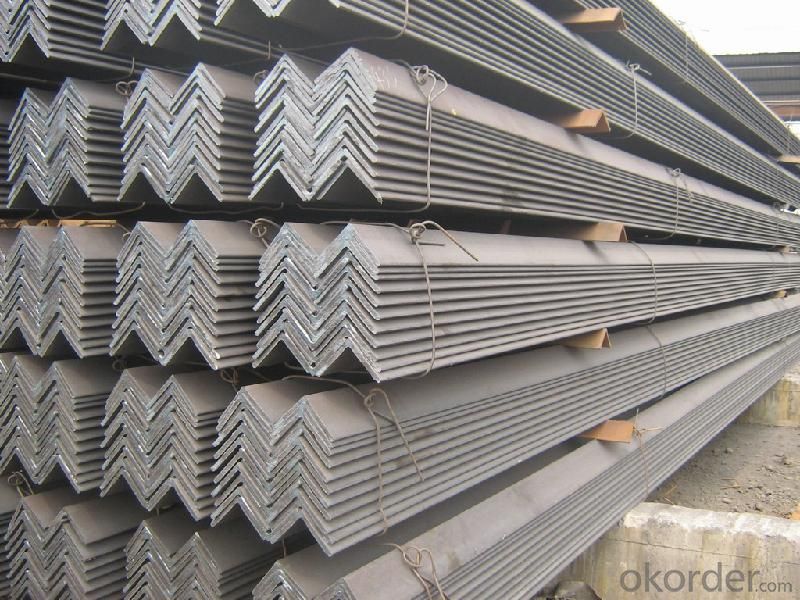
- Q: Can steel angles be used for soundproofing applications?
- No, steel angles cannot be used for soundproofing applications.
- Q: Can steel angles be painted or finished for decorative purposes?
- Indeed, steel angles have the potential to be painted or finished in order to achieve decorative purposes. These steel angles, commonly utilized in construction and industrial settings, can undergo painting or finishing procedures to enhance their visual appeal and contribute a decorative element. The act of painting steel angles serves the dual purpose of safeguarding them against corrosion and rust, while also allowing for customization to align with the aesthetic requirements of the particular project. Furthermore, alternative finishes such as powder coating, electroplating, or galvanizing can be employed to augment both the appearance and durability of these steel angles. Through the application of paint or finishing techniques, steel angles can be seamlessly integrated into a variety of architectural and design ventures, thereby serving both functional and visually enticing purposes.
- Q: Can steel angles be used for support beams?
- Yes, steel angles can be used for support beams. Steel angles are often used in construction as support beams due to their strength, durability, and ability to bear heavy loads. They provide structural support and are commonly used in framing, bracing, and reinforcing various types of structures.
- Q: What are the advantages of using steel angles over other materials?
- There are several advantages of using steel angles over other materials. Firstly, steel angles offer exceptional strength and durability, making them suitable for a wide range of structural applications. They can withstand heavy loads and provide reliable support, ensuring structural integrity. Additionally, steel angles are versatile as they can be easily customized and fabricated to meet specific design requirements. They are also cost-effective in terms of long-term maintenance and repair, as steel is highly resistant to corrosion and requires minimal upkeep. Lastly, steel angles offer excellent fire resistance, making them a safe choice for construction projects.
- Q: How do you connect steel angles to other structural members?
- Steel angles can be connected to other structural members through various methods, such as welding, bolting, or using connector plates.
- Q: What are the different types of surface defects in steel angles?
- There are several different types of surface defects that can occur in steel angles. These defects can affect the appearance, strength, and overall quality of the steel. Some common types of surface defects in steel angles include: 1. Scale: Scale refers to the formation of a thin layer of iron oxide on the surface of the steel. It is commonly caused by the exposure of the steel to high temperatures during manufacturing or processing. Scale can affect the appearance of the steel and can also lead to corrosion if not removed. 2. Pits: Pits are small depressions or cavities on the surface of the steel. They can be caused by a variety of factors, including corrosion, improper handling, or manufacturing defects. Pits can weaken the steel and reduce its overall strength. 3. Scratches: Scratches are grooves or marks on the surface of the steel caused by abrasion or contact with other objects. While scratches may not affect the structural integrity of the steel, they can impact its appearance and may provide a starting point for corrosion. 4. Inclusions: Inclusions are non-metallic particles or impurities that are trapped within the steel during the manufacturing process. They can be caused by a variety of factors, such as improper steelmaking techniques or the presence of foreign materials. Inclusions can weaken the steel, leading to reduced strength and potential failure under load. 5. Laminations: Laminations are layers or sheets of metal that are not properly bonded together during the manufacturing process. They can occur due to improper rolling or welding techniques. Laminations can weaken the steel, reducing its strength and potentially causing failure. 6. Corrosion: Corrosion is a chemical reaction that occurs when steel is exposed to moisture and oxygen. It can result in the formation of rust or other corrosion products on the surface of the steel. Corrosion can weaken the steel and reduce its overall integrity. It is important to identify and address these surface defects in steel angles to ensure the quality and performance of the steel. Regular inspection, proper handling, and appropriate surface treatment can help minimize the occurrence and impact of these defects.
- Q: Are there any specific design considerations when using steel angles?
- Yes, there are several specific design considerations when using steel angles. These include determining the appropriate size and thickness of the angle to ensure structural stability and load-bearing capacity, considering the angle's orientation and connection details for proper installation, and accounting for any potential deflection or buckling issues that may arise due to the long and slender nature of angles. Additionally, it is important to consider the corrosion resistance of steel angles in certain environments and to select the appropriate coatings or treatments to mitigate this potential issue.
- Q: How are steel angles measured?
- Steel angles are measured using two main dimensions: the length of each leg and the thickness of the material. The length of each leg refers to the distance from the intersection point of the two legs to the end of each leg. This measurement is usually expressed in inches or millimeters. The thickness of the material, also known as the gauge, is the measurement of the width of the steel angle. It is typically expressed in fractions of an inch or in millimeters. To provide a comprehensive measurement, steel angles are often described using a combination of these two dimensions. For example, a common specification could be "2 x 2 x 1/4," indicating that the steel angle has legs measuring 2 inches in length, a thickness of 1/4 inch, and both legs are equal in length. It is important to note that steel angles can be measured differently depending on the specific industry or region. Some industries may use metric measurements, while others may use imperial measurements. Therefore, it is always advisable to verify the measuring standards used in a particular context to ensure accurate understanding and communication.
- Q: Are steel angles readily available in the market?
- Yes, steel angles are readily available in the market. They are commonly found in hardware stores, construction supply shops, and online platforms, making them easily accessible for various applications.
- Q: Are steel angles resistant to UV radiation?
- Steel angles are not inherently resistant to UV radiation. However, they can be made more resistant through proper surface treatments or coatings such as paint or galvanization.
Send your message to us
Steel Unequal Angle GB Q235 Q345 20-250MM
- Loading Port:
- Tianjin
- Payment Terms:
- TT OR LC
- Min Order Qty:
- 25 m.t.
- Supply Capability:
- 20000000 m.t./month
OKorder Service Pledge
OKorder Financial Service
Similar products
Hot products
Hot Searches
Related keywords
